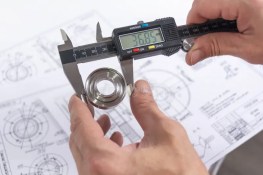During Production Inspection: Ensuring Quality Every Step of the Way
Modified on:
During Production Inspection: Ensuring Quality Every Step of the Way
In the manufacturing process, ensuring consistent quality isn’t just about verifying materials before production or inspecting the final product. During production inspection (DPI) plays a vital role in monitoring the production process as it happens. This proactive approach helps identify issues early, maintain quality standards, and avoid costly rework. In this blog, we’ll explore what during production inspection entails, its benefits, and how to implement it effectively.
About During Production Inspection
What Is During Production Inspection?
During production inspection involves monitoring and inspecting goods while they are being manufactured. Unlike pre-production or final inspections, DPI ensures that processes are on track and that intermediate products meet specifications. This inspection is typically conducted when a significant portion of production, such as 20-80%, is completed.
Why Is During Production Inspection Important?
Inspecting during production is critical because it helps identify defects or inconsistencies early in the process, preventing them from escalating into major issues. DPI ensures that quality standards are upheld throughout production, reducing the likelihood of delays and costly recalls. Additionally, it provides an opportunity to address potential bottlenecks and improve operational efficiency.
Key Steps in During Production Inspection
Inspectors start by reviewing the production schedule and specifications to ensure compliance. They then examine partially completed products to verify that they meet quality standards. Machinery and equipment are also checked to confirm they are functioning properly. Finally, inspectors document findings and communicate them to the production team for immediate resolution of any issues.
Common Issues Identified During Production Inspection
Inconsistent product dimensions or materials often surface during production inspections. Misaligned machinery or incorrect assembly methods can also be detected at this stage. Inspectors frequently uncover problems related to inadequate workmanship or deviations from the approved design and specifications.
Benefits of Conducting During Production Inspection
Conducting DPI allows manufacturers to maintain consistent quality throughout the production process. By identifying and addressing issues early, it minimizes rework and wastage. DPI also ensures timely production by preventing disruptions and delays caused by unresolved defects. Ultimately, it strengthens client trust by delivering high-quality products.
Best Practices for Effective During Production Inspection
To ensure DPI is effective, establish clear inspection criteria that align with the client’s requirements. Train inspectors thoroughly to detect and report issues accurately. Use inspection tools and software to streamline the process and maintain detailed records. Communicate findings promptly to the production team to facilitate immediate corrective actions.







